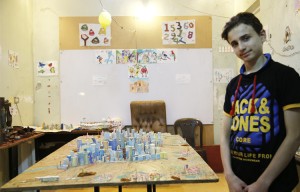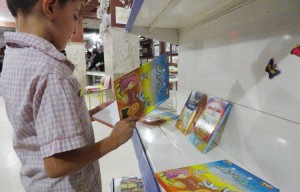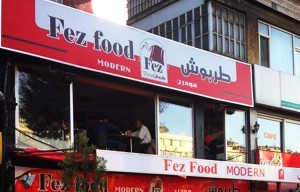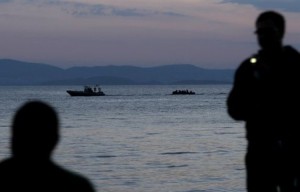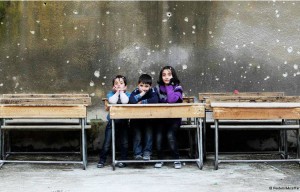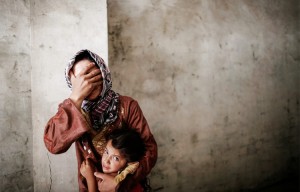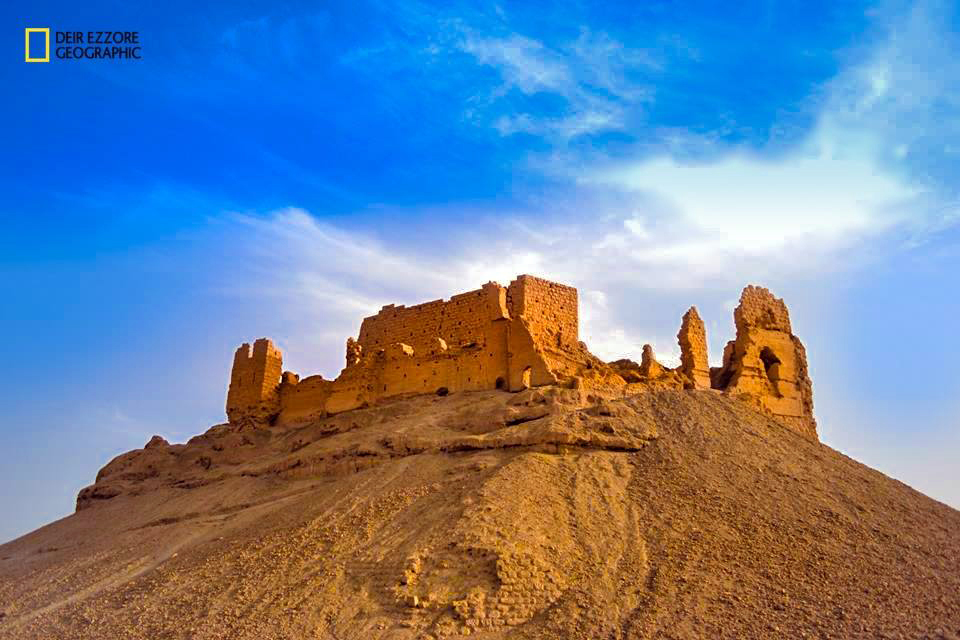
“Syria’s Historical Heritage” Between Looting and Vandalism Organized groups working on smuggling monuments out of the country, and the bombing did not spare the oldest cities in history.

Enab Baladi Issue # 119– Sun, June. 1, 2014
Every day, Syria loses its historical monuments by bombardment or stealing, the roots of thousands of years are threatened in many ways, and war merchants found the deteriorating situation inside Syria a chance to steal and smuggle the historical monuments out of the country. On the other side, the bombing and shelling spared nothing, in an organized campaign to destroy the Syrians and their ancient culture; meanwhile, a handful of responsible citizens are doing their best to maintain what is left of the regions’ memory that Syria inherited throughout history.
- Aleppo’s Monuments, massive destruction and efforts to preserve what is left
In an interview with Enab Baladi, Yusuf Musa an Architect from Aleppo and a founding member in the Syrian Association for preserving Monuments and Heritage mentioned: Since the beginning of the clashes, the city of Aleppo transformed into war fronts in Bab Antakieh, Bab Qansreen, Bab Al-Faraj and Bab Al-Nassr which were burned by Molotov and grenades;
And in the area of Bab Al-Nassr which contains Al-Hattab Yard, mosques, churches and old houses, most of which suffered great destruction. The district of Bab Antakieh that contains many mosques, the more recent belongs to the Seljuk era, and the Aragoni Bimaristan, which is considered one of the most important touristic sites in Aleppo and Al-Shaibany school, was bombed with mortar shells.
When the Omayyad Mosque was liberated the first time, it was torched by the regime’s army before leaving, according to Musa, and its minaret was bombed. And he continued: “The Syrian Association for preserving monuments dismantled the rostrum of Saladin in cooperation with governorates council and the brigades in the area to preserve it. All the artifacts and archives in Boukha House and Aleppo’s restoration archive in the Shaibany School were preserved and protected. Some statues and artifacts were recovered with great effort after being found in Aizaz prepared to be smuggled.
One of the Churches contains the oldest dome in Aleppo, which was cracked due to the bombing. The Association planned to support the dome with wooden and metal columns, but the restoration process did not start because the dome is overlooking a sniper.
And in the church itself, which was converted to a mosque by the Ottomans, the Altar of the church has two columns which are unique (four layers of opposite Papyrus), part of it collapsed and the piece was preserved, and a wall of sandbags was built to protect the Altar.
- Der Ezzor Masked Mafia and Extensive Monuments Smuggling
The monuments in Der Ezzor were sabotaged by bombing, unintentional vandalism or organized trade (masked). The architect Mouthana Muhaydi says that because of the oil in Der Ezzor, there are campaigns of oil excavations, and because the area between Al Tanf to Al Pakhos in the north, Al Pakhos in the east to beyond Al Mayadeen in the west is considered the border of Hammurabi’s Kingdom, a lot of artifacts are found, smuggled or destroyed.
- Monuments of Der Ezzor Suburbs destroyed by Unorganized Oil exploration
An activist in Der Ezzor, who preferred to maintain his anonymity, said that the historical sites in the countryside were not bombed, their destruction was caused by random exploration. One of the destroyed sites is Al-Salihia site (Dora Orobus) in Al-Bukamal, where there was a lot of digging with hand picks and bulldozers in the remains of the historical sites (the temple of Baal, the Jewish Temple and the Church). Armed men from the tribes and a brigade of the free Syrian army are supervising the excavations, and there are certain leads that found Golden artifacts which were smuggled to Turkey along with stones from the Baal Temple and the surrounding area.
The site of Halabia was vandalized; there were excavations inside the city walls, inside the towers, the church, the courthouse and in the Basalt Hill near the castle. After that the site of Tel Al-Hariry (Mary site) and the castle of Al-Rahba. The excavations in Mary are inside the ancient city walls and the surrounding area. There is a brigade of locals with metal detectors And there is certain news about clay pieces excavated from the area and smuggled. In Al-Rahba citadel the digging was inside it and in the surrounding area. Parts of the outer city walls were destroyed and some brick pieces were stolen.
And there are various levels of destruction in other sites like the hill of Abu Al-Hassan, Al-Basira Hill “Qarqisia”, Al-Sin Hill, Al-Ishara Hill, Al-Kisra Hill, Abu Ridan Hill, Al-Tawaleel Hill, Tabous Hill and the Roman graves site in the west country side “Aiash, Altabani and Altarif” and Al Sheikh Hamad , Al Toup Hill and Humayda Hill. Most of those Hills are being excavated with heavy equipment, and some historical sites discovered earlier were destroyed and some clay and stone artifacts were found belonging to the Roman and Islamic era and some golden and bronze pieces in the Roman graveyard.
In Der Ezzor city, the historical monuments were destroyed on a large scale because of the random bombing, the old market, the old Monastery, Al-Rawi Takieh, Al- Hamidy mosque, Al-Naqshabandi Takieh and the old museum, in addition to secret excavations in the sites of the antique Monastery, Al-Muqabi Souk and the Jewish cemetery. A lot of historical artifacts were found inside the city (golden pieces, clay pots, books and about eight statues (15 – 30 cm). there were photos on Facebook a few months ago showing a smuggled statue exhibited in Turkey and the sources said it was sold for three million Euros.
- The Hanging Bridge the first of the revolutions
The damages inflicted to the hanging bridge are very severe. The structure of the bridge is fully destroyed between the first and second column and between the third and fourth. The first column has fallen completely and the second slightly. The bridge described by Muthana as the least artifact in age but it has the greatest meaning to the people of the city; they always considered it as a part of their family. He added that you may spend your whole life without knowing Al Salhiya, Al Asharena Hill and the kingdom of Mary but it is impossible not to visit the bridge to see it; the French wanted to build a connecting bridge only yet they built a soul.
Al Muhaidy concluded saying, “the bridge might be restored as a part of the public service, but never as a historical monument”.
- Organisations and Brigades working in Excavations
A lot of foreign organizations enter the country under the mask of civil work or nongovernmental organisations to work as artifact Mafias; most of them under Iraqi Patronage, and the smuggling happens under gun threat.
Our source, who preferred not to state his name, “the brigades working in excavation do so secretly in very small groups. They have metal detectors and maps of the historical sites provided by unknown people -most likely Syrians – living abroad. A person from New Zealand came to Der Ezzor a year and half ago and stayed with one of the brigades controlling the Al Souk Al Muqaba Site for a week. We also noticed that French journalists asked about those areas frequently while covering the war in this area.
- Shy Efforts To Preserve the Historical Heritage
There are Maps of all the historical sites in the city and its countryside and they are kept in the directorate of Monuments and Museums, beside the office of documentation in the commerce chamber of Der Ezzor. Those documents were moved out of the city by a group of activists.
But there are no efforts from any side in the liberated section to protect the monuments, because it is dangerous as some brigades control the historical sites and the excavations are a secret.
And there is information about assassinations of people who knew about the excavations and revealed them to the public.
The Regime on the other side and through the directorate of monuments and some public figures, reached out to the citizens and heads of tribes in the historical areas to protect the monuments in their surroundings but most of their attempts failed.
اذا كنت تعتقد/تعتقدين أن المقال يحوي معلومات خاطئة أو لديك تفاصيل إضافية أرسل/أرسلي تصحيحًا
إذا كنت تعتقد/تعتقدين أن المقال ينتهك أيًا من المبادئ الأخلاقية أو المعايير المهنية قدم/قدمي شكوى
-
تابعنا على :




